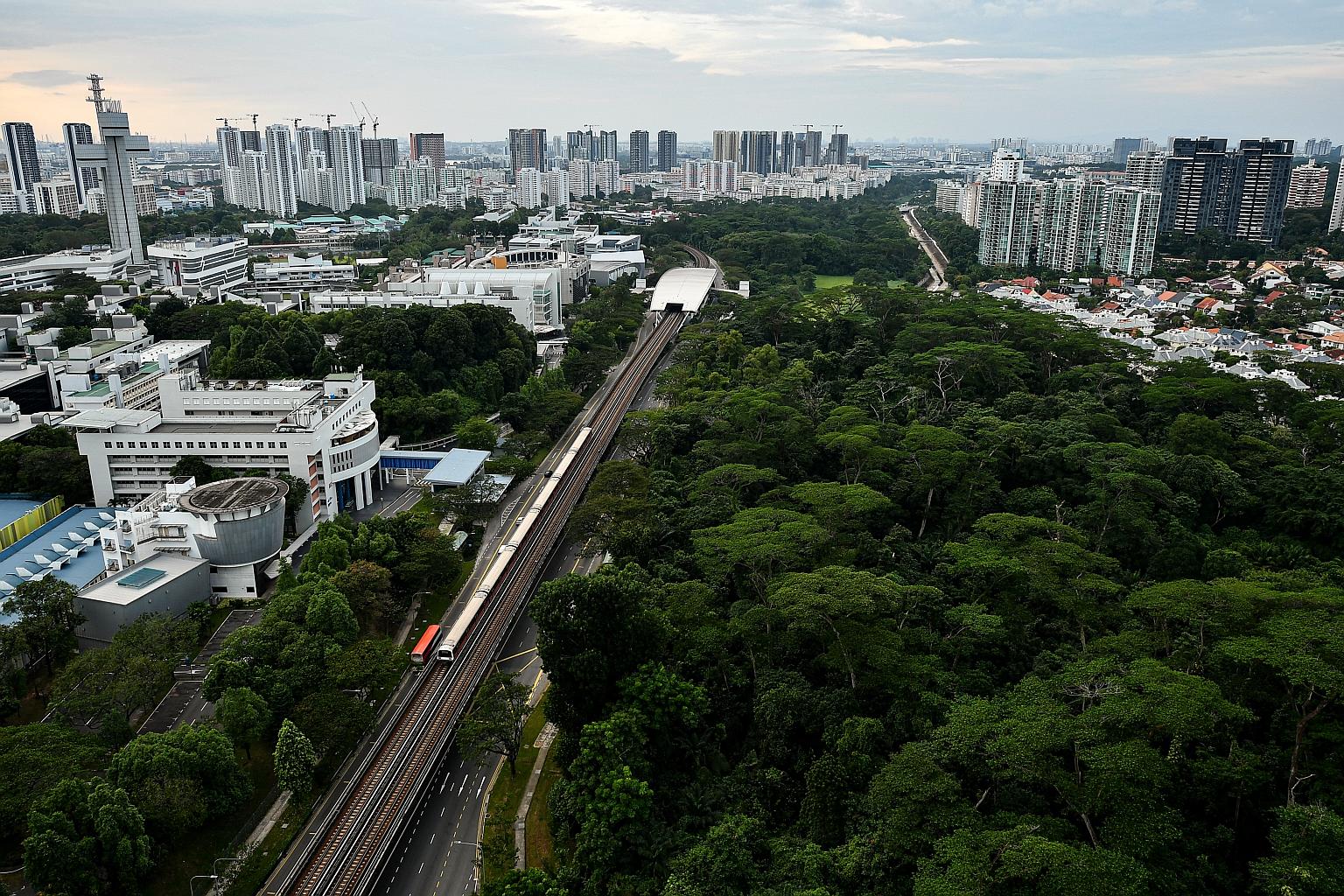Land here a smaller emitter of carbon in 2016 than in 2014
Sign up now: Get ST's newsletters delivered to your inbox

Land contributed 0.03 per cent of Singapore's carbon emissions in 2016, down from 0.12 per cent in 2014, according to the Biennial Update Report. The drop was because fewer forests were cleared for human settlements. Meanwhile, Dover Forest (above), for instance, has been zoned for residential use.
ST PHOTO: LIM YAOHUI
Follow topic:
Land in Singapore became a smaller emitter of greenhouse gases in 2016 compared with 2014 because fewer forests were cleared for human settlements.
In 2014, land contributed 0.12 per cent of the country's emissions.
This dropped to 0.03 per cent in 2016, according to a report that Singapore submitted to the United Nations Framework Convention on Climate Change (UNFCCC) last December.
When Singapore submitted its previous report to the UNFCCC in 2018, The Straits Times reported that land here had changed from being a net absorber of carbon in 2012 to a net emitter in 2014, due largely to deforestation.
Queried about the drop recorded in the latest assessment, Mr Hassan Ibrahim, deputy director for international biodiversity conservation at the National Parks Board (NParks), said: "There were fewer conversions from areas of higher carbon stock to areas with lower carbon stock in 2016 as compared with 2014."
NParks tracks emissions from the land use, land-use change and forestry sector. Carbon stock refers to the amount of carbon held within a piece of land.
Natural habitats like forests are considered areas of high carbon stock because they lock plenty of carbon in the soil and in the roots, trunks and leaves of plants. In doing so, these natural ecosystems help to keep carbon out of the atmosphere. Carbon dioxide is the main planet-warming gas driving climate change.
"When an area of high carbon stock is converted to an area with lower carbon stock, the stock cleared will be recorded as emissions," Mr Hassan said.
"As natural regrowth or new planting is added and grows, carbon removal will be recorded and this results in a reduction in the net emissions output in the settlements category."
The emissions recorded for the land use, land-use change and forestry sector are those from forest land, settlements and wetlands, for instance.
The 2016 figures for how the sector absorbs and contributes to emissions were part of Singapore's fourth Biennial Update Report, which the country submits to the UN every two years as part of its international obligations.
The report provides the breakdown of national greenhouse gas emissions and removals, and actions taken to reduce them.
Data on emissions and removals from land use in 2014 was outlined in the report submitted in 2018, while the 2016 data was highlighted in the latest report, submitted last year.
Most of Singapore's emissions still come from energy use, with this sector contributing 94.8 per cent of the country's total emissions in 2016.
But Singapore's use of land - and the perennial tussle between development and conservation - has come under the spotlight amid a national discussion over the future of Clementi and Dover forests.
Both patches are zoned for residential use.
The authorities have said there is no immediate need to develop the Clementi plot for housing, while the public consultation period on the fate of the Dover Forest site has been extended by four weeks till March 1.
Professor Koh Lian Pin, a Nominated MP and a conservation scientist at the National University of Singapore, said that to stem further emissions from deforestation, it is important for the country to protect its remaining forests, such as the pockets of older secondary forests of the Central Catchment Nature Reserve. "At the same time, the One Million Trees initiative and other reforestation or tree-planting activities are important to start capturing and removing carbon dioxide from the atmosphere," he said.
Audrey Tan

